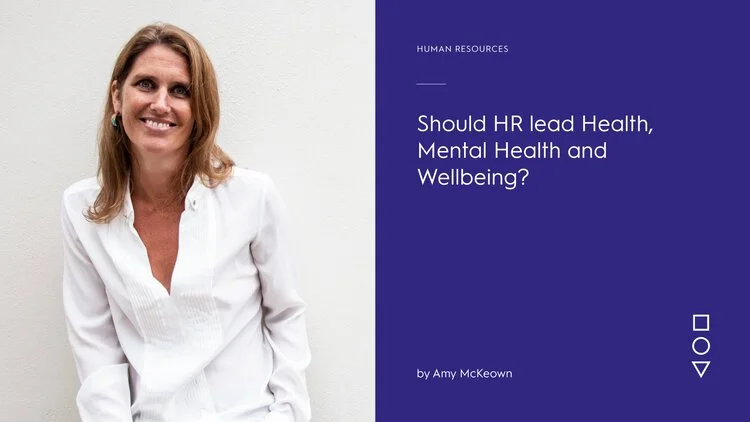Should HR lead Health, Mental Health and Wellbeing?
Last week on my vlog, I discussed why I think that HR might not be the right place for health, mental health and wellbeing to sit. I explained that although they should be key stakeholders in it, they might not be the best people to run it.
This proved somewhat controversial with some people, but I stand by my comments. I think that for health and mental health to be at their best, they need to be a stand-alone function within an organisation, just as D&I is. A good Wellbeing or D&I strategy will weave through all parts of an organisation, like the weft passing under and over the warp. They will involve a large number of varied and different stakeholders; but will be outside any one particular unit.
What I frequently see is the Wellbeing ‘brief’ being added to an existing role. The result is a Wellbeing ‘strategy’ that is morphed into whatever was there before:
· Under HR, Wellbeing can become a collection of policies, processes and wellbeing activities (Mindfulness?!).
· When Wellbeing sits within Employee Relations, the focus is on structure (policies) and there is a lean to protecting the organisation, rather than its employees.
· If Wellbeing belongs to Health & Safety, it becomes Health and Safety risk management with a bit of Mental Health First Aid.
· Wellbeing in D&I’s hands becomes D&I with a little bit of mental health mixed in…
You get the idea. If not sitting under a dedicated person or team, it does not become a clear, end to end Health, Mental Health and Wellbeing Strategy or function. Nor is it run by anyone with real expertise - an ‘enthusiastic amateur’ in other words, or someone who has added it to their current role.
The key to success is to make sure that Health, Mental Health and Wellbeing sit in the right place. That the politics about ‘who owns it’ is circumvented. That it has the right owner and then appropriate support and challenge for it to be run effectively (bought in experts and health providers, stakeholders from across the organisation, engagement and challenge from different groups). That it is not run in a silo by one particular part of the organisation, even HR…
Two other things that are also key are making sure that Wellbeing is successful are:
1) Making sure that it has a Senior Champion or Board Level support. If you don’t have the senior guys (and gals) bought in, then you will never have investment or scope to really make change.
2) Listening to and understanding what your people actually want and need from your approach to health and wellbeing. I see too many strategies (policies and processes) written by people in HR or support functions who don’t have the same day to day challenges and needs as the people ‘on the shop floor’ or doing the actual work of the business. If you don’t know what people need then how are you going to support them?
So, in summary, before you give ‘Mental Health or Wellbeing’ to your People Function or HR team, I ask you to please stop and think. Is this the best place for it? What are the pitfalls? Would it do better as a stand-alone function? Who needs to be involved? Will it become siloed? Would you go to a gardener if you needed a new roof? Thinking this through up front can save a lot of time, energy, politics and costs further down the line.
Next month I’ll be looking at how you use technology or apps within your health and mental health strategy. In this world of Covid and remoteness I am seeing a lot of companies rush to give their people access to digital tools. I am going to explore the rights and of course, wrong of this…
You can sign up for Amy’s 6-week practical, skills led course on all aspects of creating and implementing an organisational health, mental health, or wellbeing strategy and programme - check out more info HERE

